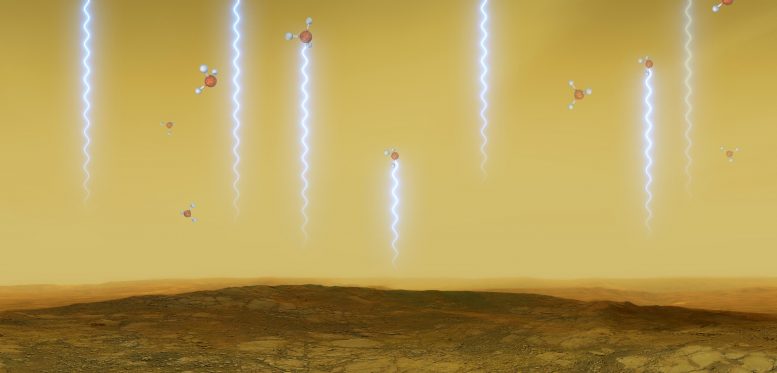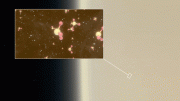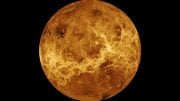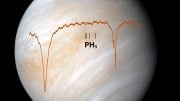
This artistic illustration depicts the Venusian surface and atmosphere, as well as phosphine molecules. These molecules float in the windblown clouds of Venus at altitudes of 55 to 80km (34 to 50mi), absorbing some of the millimeter waves that are produced at lower altitudes. They were detected in Venus’s high clouds in data from the James Clerk Maxwell Telescope and the Atacama Large Millimeter/submillimeter Array, in which ESO is a partner. Credit: ESO/M. Kornmesser/L. Calçada
An international team of astronomers today announced the discovery of a rare molecule — phosphine — in the clouds of Venus. This detection could point to extra-terrestrial “aerial” life in the Venusian atmosphere. Watch our summary of the discovery.
An international team of astronomers announced the discovery of a rare molecule — phosphine — in the clouds of Venus.
On Earth, phosphine gas is only made industrially or by microbes that thrive in oxygen-free environments.
Astronomers have speculated for decades that high, temperate clouds on Venus could offer a home for microbes… …the detection of phosphine could point to such extra-terrestrial “aerial” life.
The team considered processes on Venus, such as volcanoes or sunlight, to explain the presence of phosphine… …but found these can make at most one ten thousandth of the amounts detected.
The discovery was made using the James Clerk Maxwell Telescope… …with the more sensitive ALMA observatory, in which ESO is a partner, confirming it.
For more on this discovery on SciTechDaily, see:









Be the first to comment on "Extra-Terrestrial “Aerial” Life on Venus? Possible Marker of Life Spotted in Venusian Atmosphere [Video]"